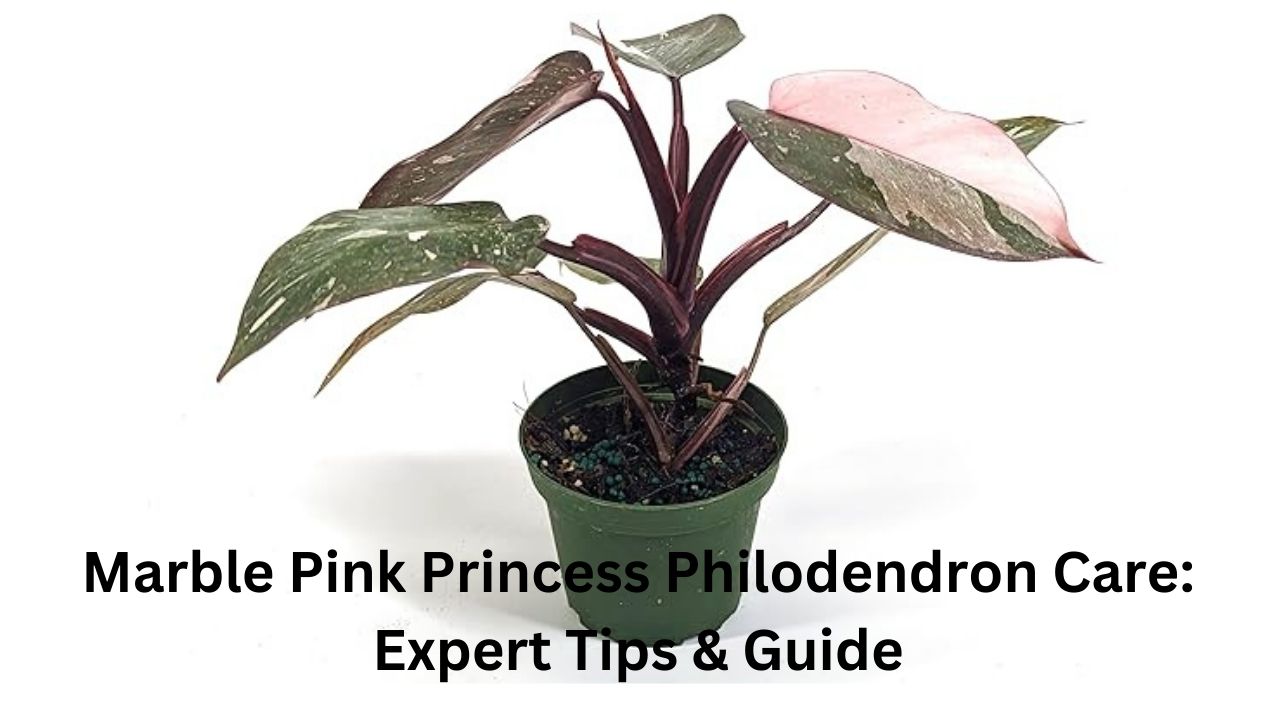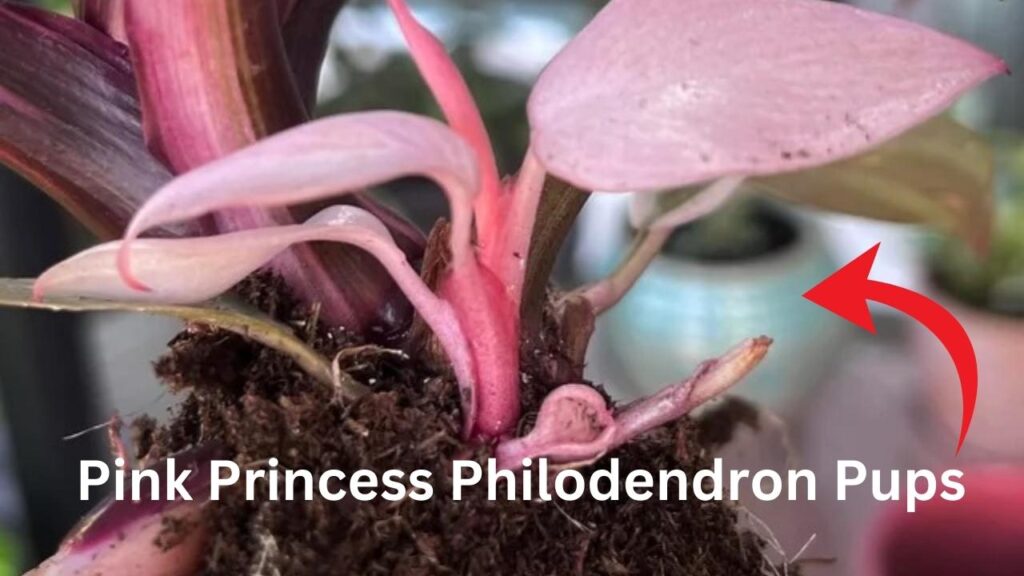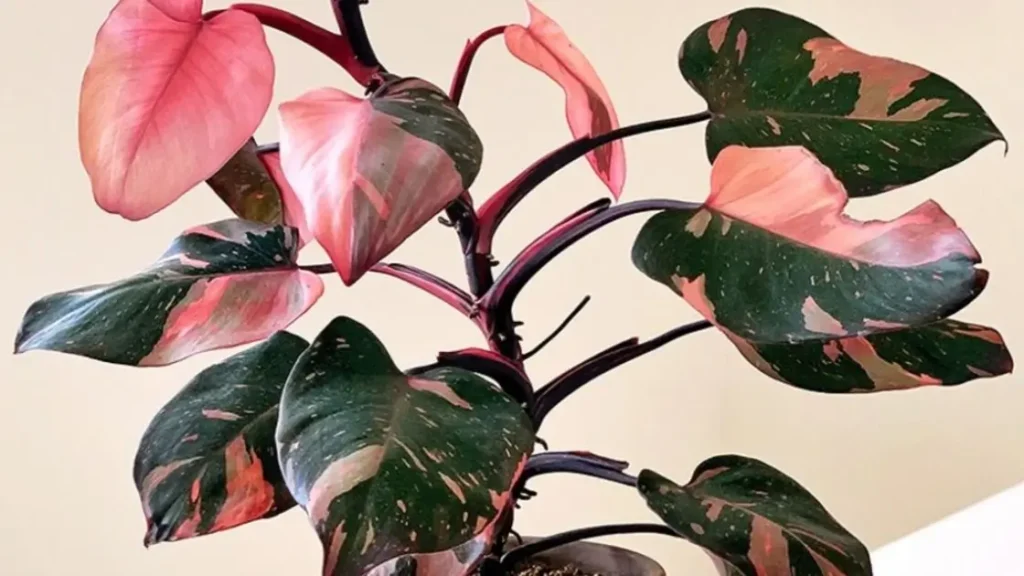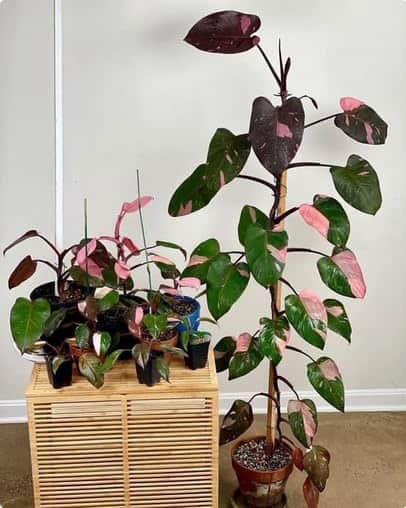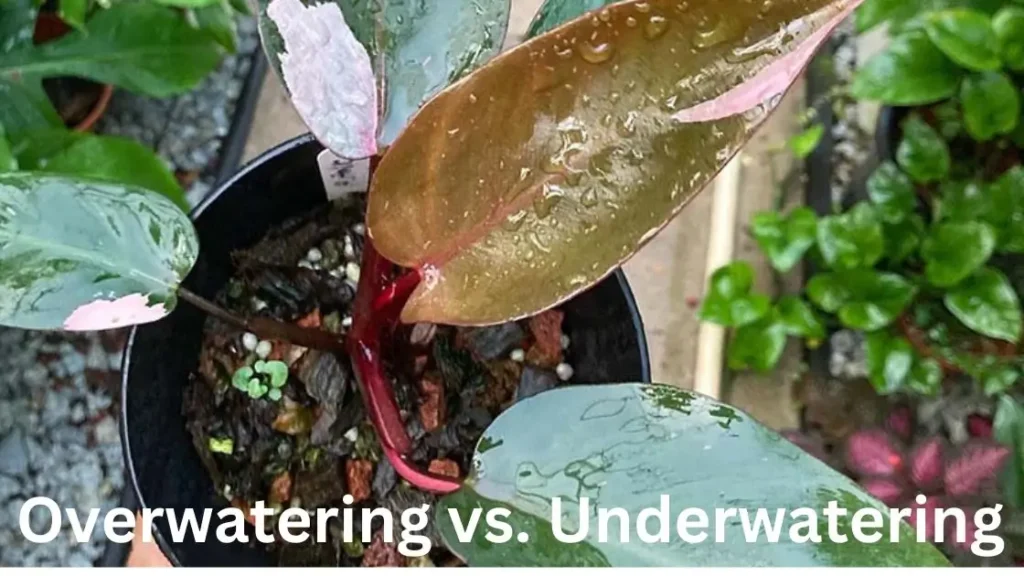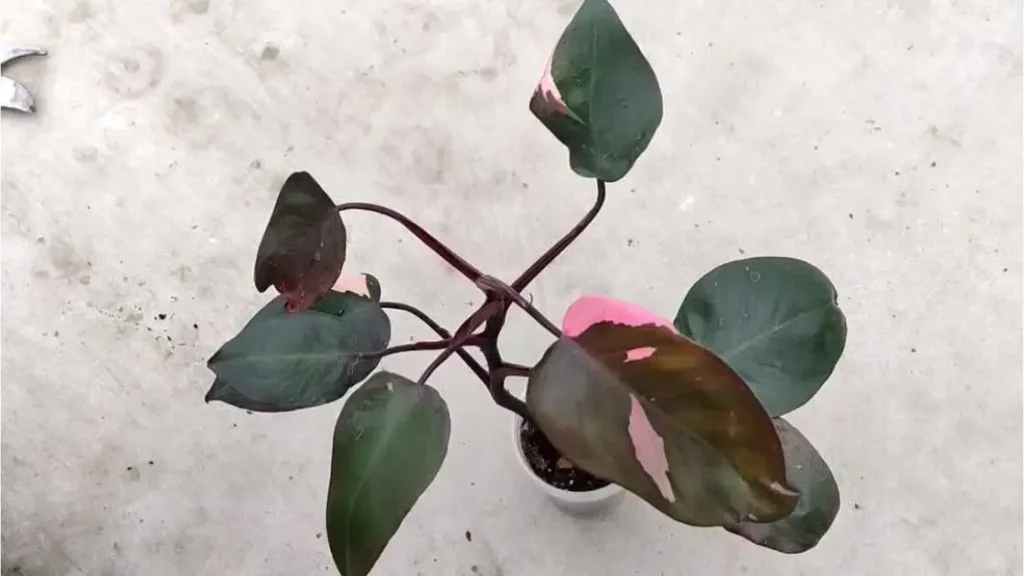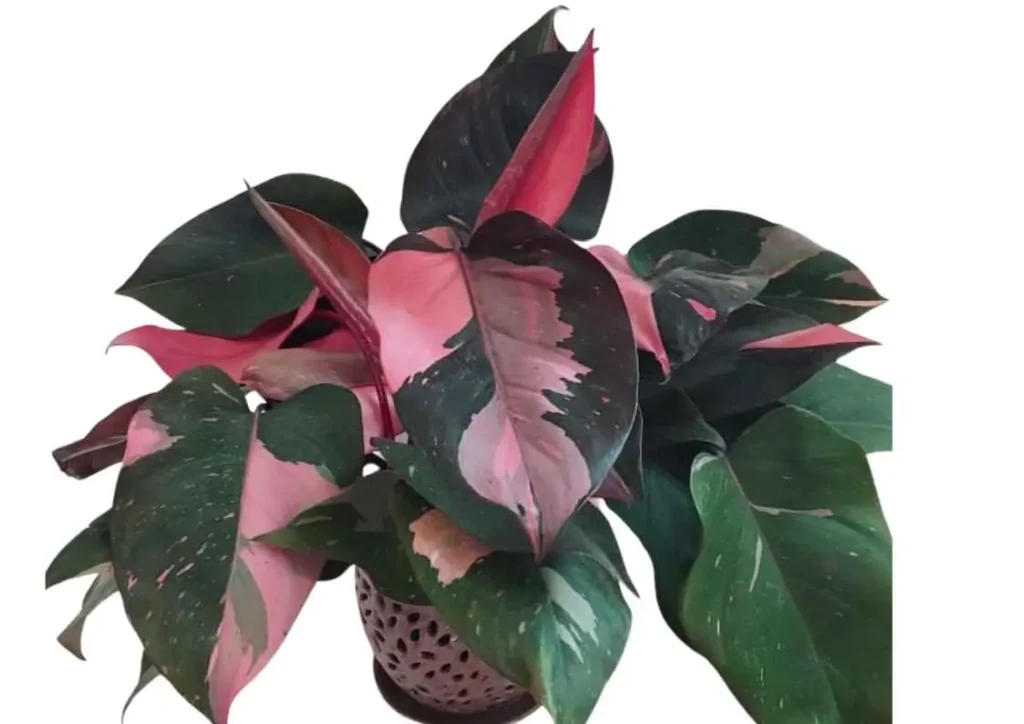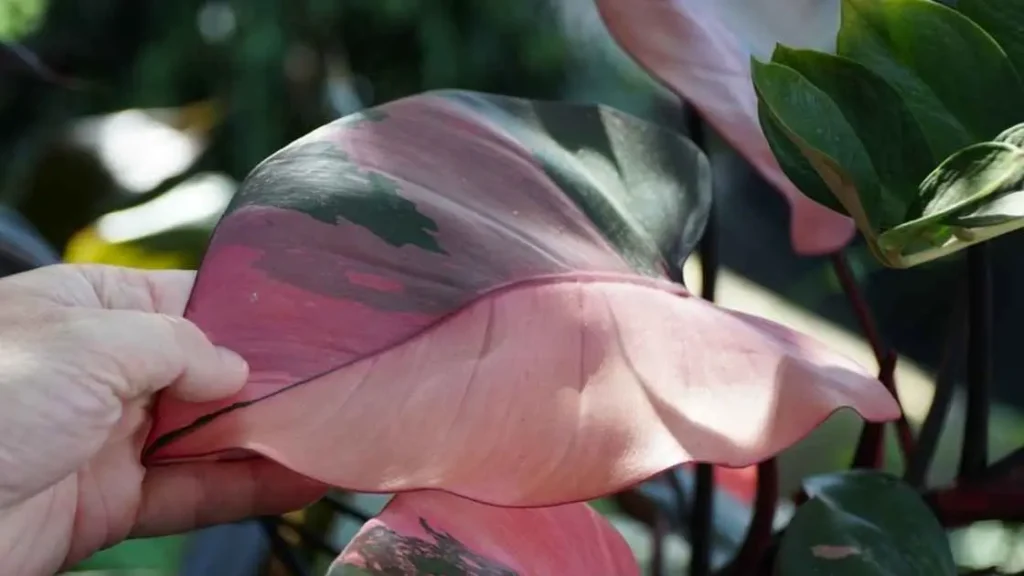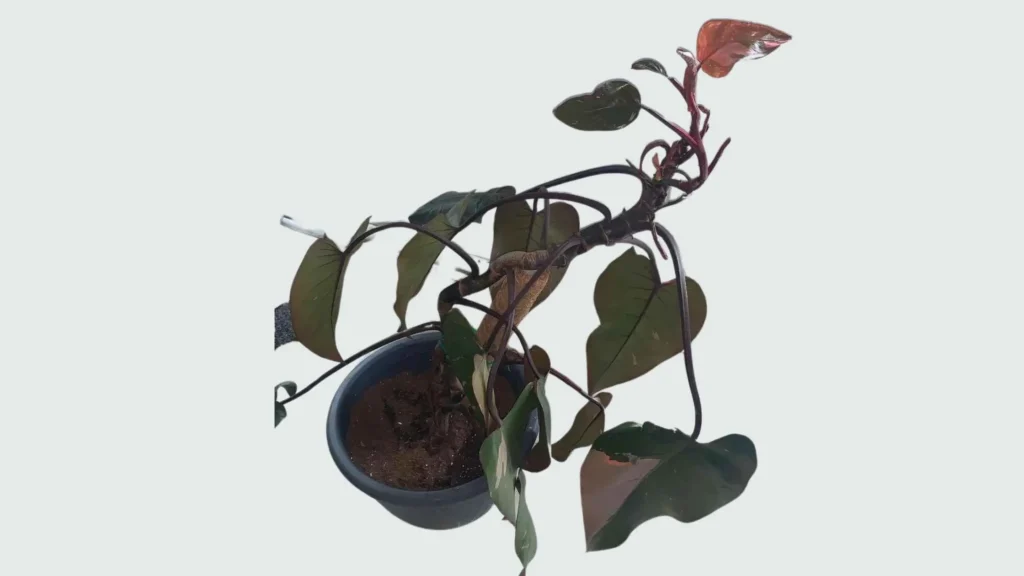Table of Contents
ToggleAre you mesmerized by the stunning pink and green leaves of the Marble Pink Princess Philodendron? This rare beauty has become a must-have for plant lovers, thanks to its unique variegation and striking appearance. But keeping those vibrant pink patches and lush growth isn’t as easy as it looks. Without the right care, the colors can fade, and the plant may struggle. In this guide, you’ll learn everything you need to know to keep your Marble Pink Princess Philodendron thriving. From light and watering tips to solving common problems, I’ll help you master the care essentials for this gorgeous plant.
Understanding the Marble Pink Princess Philodendron
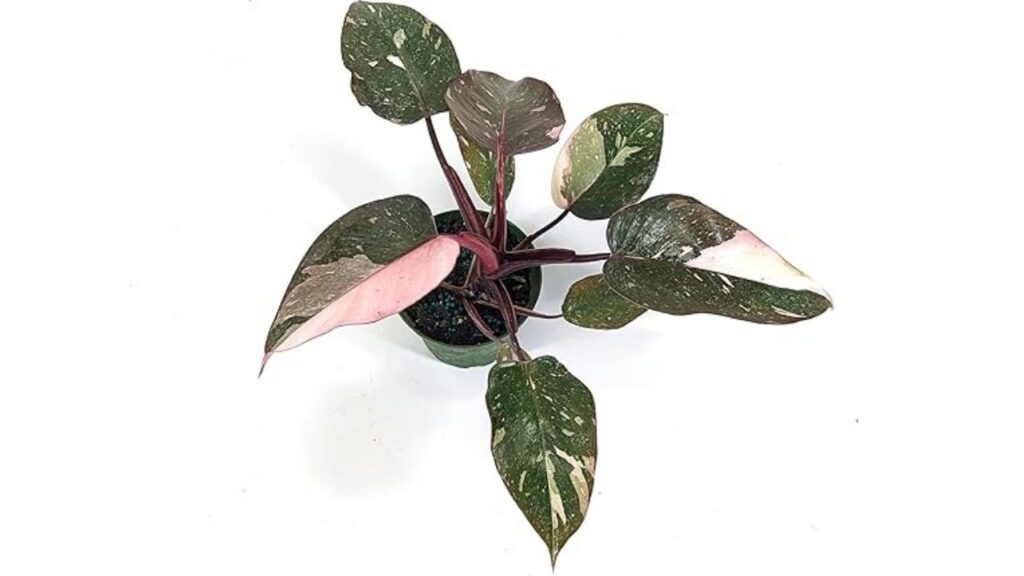
The Marble Pink Princess Philodendron is a unique variety of the Philodendron erubescens species. It’s known for its striking leaves that showcase a blend of pink, white, and green. This plant’s vibrant colors are not just a result of genetics but also depend on how it’s grown.
Origin and Background:
The Marble Pink Princess Philodendron comes from the rainforests of South America. It belongs to the aroid family, a group of tropical plants that thrive in humid environments. The wild version of this plant grows on tree trunks, climbing upwards to find light. At home, it shows similar behavior, often growing as a climbing vine. With the right care, it can quickly become a centerpiece in your indoor plant collection.
This plant’s appeal lies in its rare variegation, making each leaf look different. However, getting those bright pink and white patches requires the right light and care. It’s important to understand its needs before you bring one home.
Key Characteristics of the Marble Pink Princess Philodendron
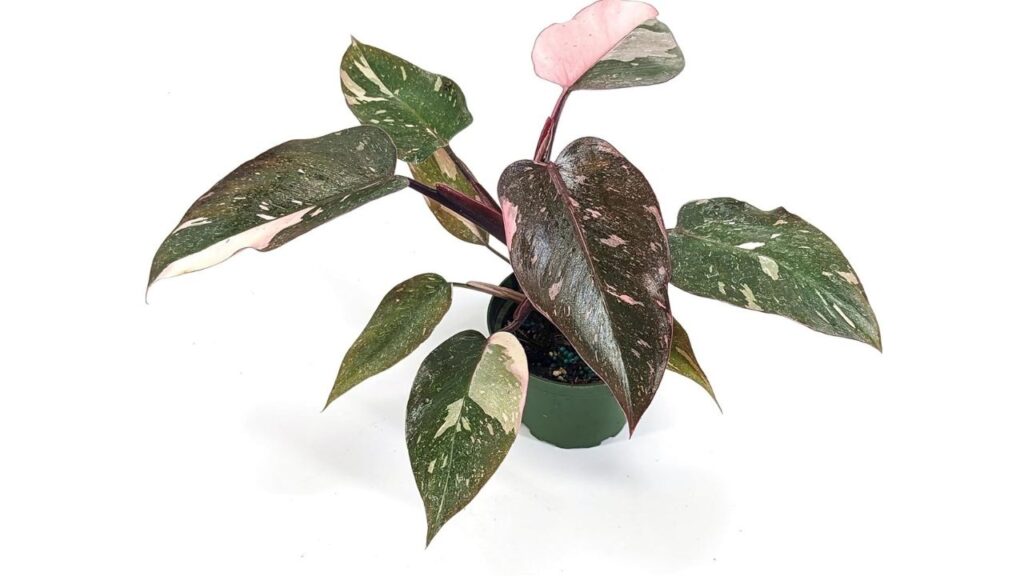
The Marble Pink Princess Philodendron stands out because of its stunning and colorful leaves. The leaves have a mix of deep green, bright pink, and creamy white. The pink variegation is what makes this plant so popular. No two leaves are the same, and this variety gives the plant a unique, artistic look.
Leaf Shape and Size:
The leaves of the Marble Pink Princess Philodendron are heart-shaped and glossy. They start off small but can grow quite large with proper care. The plant itself can grow several feet tall if given the support of a moss pole or trellis.
Variegation Patterns:
The unique colors on the leaves are called variegation. The pink patches are due to a lack of chlorophyll, which is the green pigment in plants. More pink means less green, so the plant might need extra light to stay healthy. Sometimes, new leaves may come in mostly green or mostly pink. It’s normal and can change as the plant matures.
Growth Habit:
This plant grows as a vine. In its natural habitat, it climbs trees. At home, you can train it to grow up support or let it trail from a hanging pot. The Marble Pink Princess Philodendron is a fast grower if you give it what it needs, especially light and humidity.
Optimal Growing Conditions for Marble Pink Princess Philodendron
To keep your Marble Pink Princess Philodendron healthy and vibrant, it’s important to provide the right environment. This plant needs specific conditions to maintain its colorful variegation and overall growth.
Light Requirements:
The Marble Pink Princess Philodendron loves bright, indirect light. Too little light can cause the pink color to fade, while too much direct sun can burn the leaves. Place it near a window where it gets filtered light or use sheer curtains to diffuse the sunlight. If the plant gets too much shade, the leaves may turn mostly green, losing their beautiful pink tones.
Temperature:
This plant prefers warm conditions. The ideal temperature range is between 60°F and 85°F (16°C to 29°C). It does not like cold drafts or sudden temperature changes. Keep it away from air conditioners and heaters, as these can stress the plant.
Humidity:
The Marble Pink Princess Philodendron loves high humidity. Aim for a humidity level of 60% or higher. If your home is dry, especially in winter, consider using a humidifier or placing the plant on a tray with water and pebbles. Higher humidity helps keep the leaves healthy and prevents browning at the edges.
Soil and Potting for Marble Pink Princess Philodendron
Choosing the right soil is key to a healthy Marble Pink Princess Philodendron. This plant needs well-draining soil that allows air to reach its roots. If the soil stays too wet, the roots can rot, which can harm your plant.
Best Soil Mix:
A good mix for the Marble Pink Princess Philodendron includes potting soil, perlite, and orchid bark. The potting soil provides nutrients, perlite helps with drainage, and orchid bark keeps the soil light and airy. This mix mimics the plant’s natural environment and helps prevent overwatering.
Pot Choice:
Use a pot with drainage holes to let excess water escape. Without good drainage, the soil can stay soggy, leading to root problems. Terracotta pots are a good choice because they help the soil dry out faster. However, plastic pots are fine if you watch your watering habits closely.
Repotting Tips:
The Marble Pink Princess Philodendron grows quickly, so you may need to repot it every 1 to 2 years. Choose a pot that is one size bigger than the current one. Repotting gives the plant more room to grow and refreshes the soil with new nutrients.
Watering Guidelines for Marble Pink Princess Philodendron
Watering is one of the most important aspects of caring for a Marble Pink Princess Philodendron. This plant likes moist soil but doesn’t do well if the roots are soaked for long periods. Too much water can cause root rot, which can be hard to fix.
How Often to Water:
Check the top inch of soil before watering. If it feels dry, it’s time to water your Marble Pink Princess Philodendron. If the soil is still damp, wait a few more days. Overwatering can quickly lead to yellow leaves and root problems.
Watering Tips:
When you water, do so thoroughly until water drains out from the bottom of the pot. This ensures that all the roots get enough moisture. However, don’t let the plant sit in a saucer of water. Always empty the saucer after watering to avoid waterlogged soil.
Signs of Underwatering:
If the leaves start curling or look dry and crispy, your Marble Pink Princess Philodendron might need more water. Give it a good drink and check the soil regularly to prevent this.
Signs of Overwatering:
If the leaves turn yellow and feel soft, you might be overwatering. Let the soil dry out completely before watering again. If the problem continues, consider repotting in fresh, dry soil.
Temperature and Humidity for Marble Pink Princess Philodendron
The Marble Pink Princess Philodendron thrives in warm and humid conditions. Its natural environment is the tropical rainforests, so it prefers similar indoor settings.
Ideal Temperature:
The best temperature range for a Marble Pink Princess Philodendron is between 60°F and 85°F (16°C to 29°C). Keep the plant away from cold drafts or sudden temperature changes. Avoid placing it near air conditioners or heaters, as extreme cold or hot air can stress the plant.
Humidity Needs:
High humidity is crucial for the Marble Pink Princess Philodendron. Aim for a humidity level of 60% or higher. In dry indoor environments, especially during winter, the air can get too dry for the plant. If you notice the edges of the leaves turning brown or crispy, it’s a sign of low humidity.
How to Increase Humidity:
To boost humidity, you can use a humidifier near the plant. Alternatively, place the plant on a tray filled with water and pebbles. As the water evaporates, it increases the humidity around the plant. Grouping plants together can also help create a more humid microclimate.
Fertilization for Marble Pink Princess Philodendron
Fertilizing your Marble Pink Princess Philodendron helps it grow strong and maintain its bright, colorful leaves. However, this plant does not need heavy feeding. Over-fertilizing can harm the plant, so it’s important to get the balance right.
When to Fertilize:
Fertilize your Marble Pink Princess Philodendron during the growing season, which is spring and summer. Feed the plant once a month when it is actively growing. In fall and winter, the plant usually slows down, so you can stop fertilizing during these months.
Type of Fertilizer:
Use a balanced liquid fertilizer, such as a 20-20-20 formula. Dilute the fertilizer to half strength before using it. This prevents the risk of burning the plant’s roots. You can also use an organic fertilizer, like fish emulsion or seaweed extract, for a gentler feeding option.
Signs of Over-Fertilization:
If you notice yellow or brown leaf tips, it may be due to too much fertilizer. Flush the soil with water to remove excess salts and let the plant rest for a few weeks before feeding again.
Pruning and Maintenance of Marble Pink Princess Philodendron
Pruning is a key part of caring for your Marble Pink Princess Philodendron. It helps keep the plant looking neat and encourages bushy growth. Regular maintenance also helps control the size and shape of the plant, making it easier to manage indoors.
Why Prune?
Pruning removes old, yellow, or damaged leaves. This helps the plant focus its energy on healthy new growth. It also prevents the spread of any pests or diseases that might affect the leaves.
How to Prune:
Use clean, sharp scissors or pruning shears. Cut just above a leaf node (the place where the leaf meets the stem). This encourages the plant to grow more branches. Always remove any leaves that are fully green and lack pink variegation, as these can take energy away from the rest of the plant.
Tips for Healthy Pruning:
Do not remove too many leaves at once. Pruning too much can stress your Marble Pink Princess Philodendron. A good rule of thumb is to trim only 10-20% of the leaves at a time. After pruning, place the plant in bright, indirect light to help it recover.
Common Issues and Solutions for Marble Pink Princess Philodendron
Like any houseplant, the Marble Pink Princess Philodendron can face some problems. But don’t worry! Most issues can be fixed with a few simple changes. Let’s go over the most common problems and how to solve them.
1. Yellow Leaves:
If you see yellow leaves, it usually means the plant is getting too much water. Check the soil before you water again. Let the top inch of soil dry out fully before the next watering. Also, make sure the pot has good drainage.
2. Loss of Pink Variegation:
If your Marble Pink Princess Philodendron is losing its pink color, it may not be getting enough light. Move the plant to a spot with bright, indirect light. Avoid direct sunlight, as it can burn the leaves. More light helps keep the pink patches vibrant.
3. Brown Leaf Edges:
Brown edges often mean the air is too dry. This plant loves humidity, so try increasing the moisture in the air. Use a humidifier or place the plant on a tray with water and pebbles. This should help prevent the leaves from drying out.
4. Pests (Spider Mites, Mealybugs):
The Marble Pink Princess Philodendron can sometimes attract pests like spider mites and mealybugs. If you notice tiny bugs or sticky leaves, wipe them off with a damp cloth. You can also spray the plant with a mix of water and mild soap. Repeat weekly until the pests are gone.
Propagation of Marble Pink Princess Philodendron
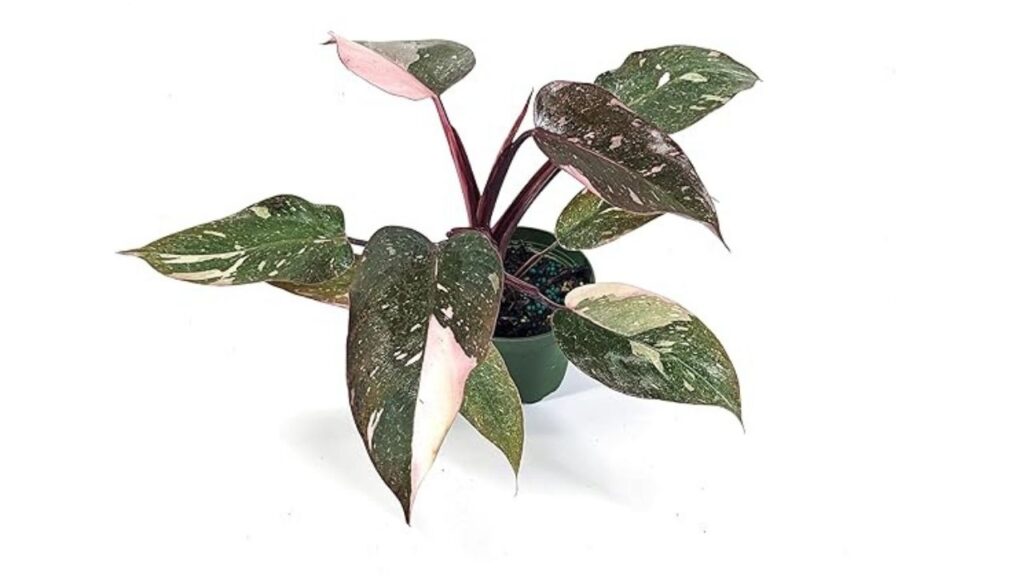
Propagation is a great way to grow more Marble Pink Princess Philodendron plants from your existing one. It’s also a good way to keep the plant healthy by removing long, leggy stems. The easiest and most common method is by using stem cuttings.
Step-by-Step Propagation Guide:
1. Choose a Healthy Stem:
Select a stem with at least two or three healthy leaves. Look for a node (a small bump on the stem). This is where roots will grow.
2. Cut the Stem:
Using clean scissors, cut the stem just below a node. Make sure your cutting tool is sharp and disinfected to avoid spreading disease.
3. Prepare the Cutting:
Remove the lower leaves, leaving only one or two at the top. This helps the plant focus its energy on growing roots rather than keeping leaves alive.
4. Root the Cutting in Water or Soil:
You can root your Marble Pink Princess Philodendron cutting in a jar of water or directly in soil. If you choose water, place the cutting in a clear jar and keep it in a spot with bright, indirect light. Change the water every week to keep it fresh. If rooting in soil, plant the cutting in a small pot with moist, well-draining soil.
5. Wait for Roots to Develop:
In water, you should see roots start to grow in about 2-4 weeks. If you root the cutting in soil, gently tug after a few weeks to check for resistance, which means roots have formed.
6. Plant and Care for the New Plant:
Once the roots are at least 2 inches long, you can plant the cutting in a pot with fresh soil. Care for it just like you would for your original Marble Pink Princess Philodendron.
Conclusion
The Marble Pink Princess Philodendron is a truly special plant that can become the highlight of any indoor garden. With its striking pink, white, and green leaves, it’s no surprise that it is highly valued by plant enthusiasts. However, to keep it looking its best, proper care is key.
Remember to provide bright, indirect light and keep the soil well-draining to prevent root issues. Maintain warm temperatures and high humidity to mimic its natural tropical environment. Fertilize during the growing season, but avoid overfeeding. Regular pruning helps manage its shape and encourages healthy growth. Watch out for pests and solve common problems quickly to ensure your plant stays vibrant.
With the right care, your Marble Pink Princess Philodendron will thrive and reward you with stunning, colorful foliage. Whether you are a beginner or an experienced plant parent, following these simple steps will help you enjoy the beauty of this unique philodendron for years to come.
Frequently Asked Questions (FAQs)
How can I increase the pink color in my Marble Pink Princess Philodendron?
To enhance the pink variegation, place your plant in bright, indirect light. Adequate light encourages vibrant colors. However, avoid direct sunlight, as it can burn the leaves.
Why are the leaves of my Marble Pink Princess Philodendron turning yellow?
Yellow leaves often indicate overwatering. Ensure the top inch of soil is dry before watering again. Also, check that the pot has proper drainage to prevent water from sitting at the bottom.
Can I grow a Marble Pink Princess Philodendron in low light?
While the plant can survive in low light, its pink variegation may fade, and growth can slow down. For the best color and health, provide bright, indirect light.
How do I propagate my Marble Pink Princess Philodendron?
You can propagate it using stem cuttings. Cut a healthy stem with at least one node, place it in water or moist soil, and wait for roots to develop before planting it in a pot.
What should I do if my Marble Pink Princess Philodendron gets pests?
If you notice pests like spider mites or mealybugs, wipe the leaves with a damp cloth and apply insecticidal soap. Regularly inspect your plant to catch and treat infestations early.
Related
Discover more from Pink Philodendron
Subscribe to get the latest posts sent to your email.

